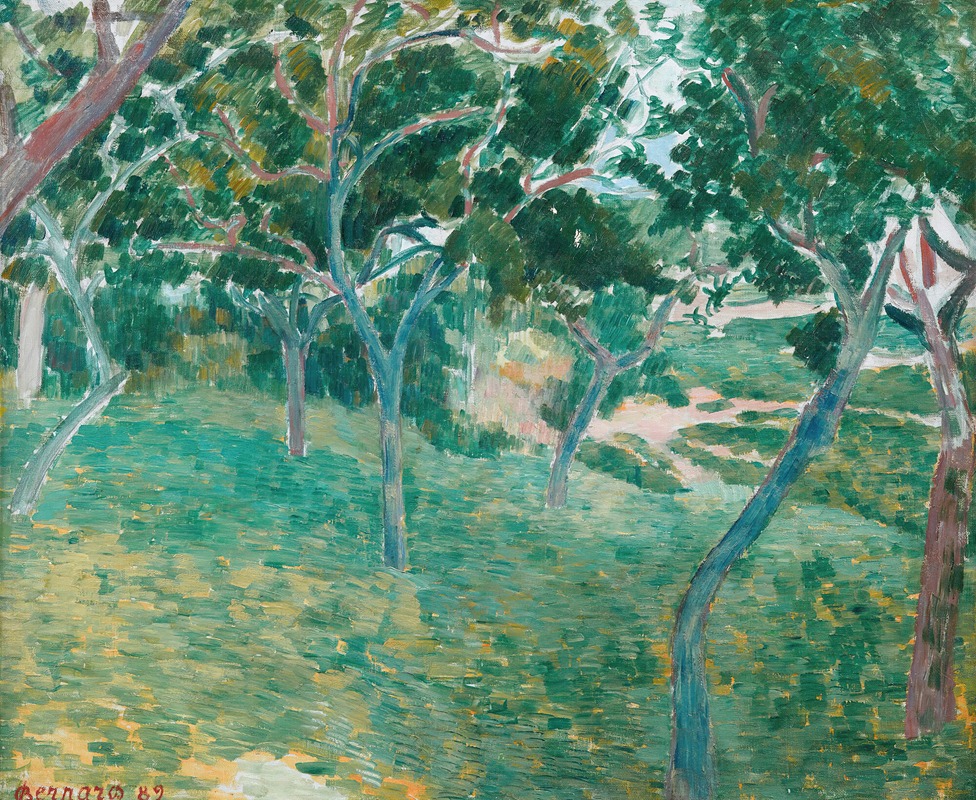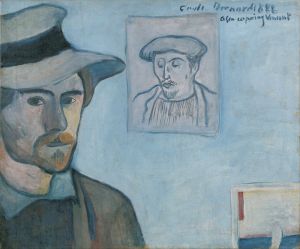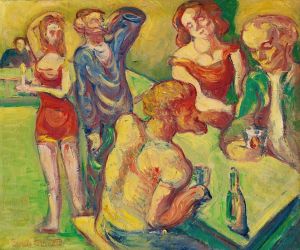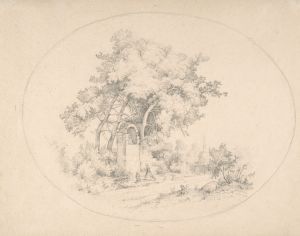
Un Coin Du Bois D’amour A Pont Aven
A hand-painted replica of Emile Bernard’s masterpiece Un Coin Du Bois D’amour A Pont Aven, meticulously crafted by professional artists to capture the true essence of the original. Each piece is created with museum-quality canvas and rare mineral pigments, carefully painted by experienced artists with delicate brushstrokes and rich, layered colors to perfectly recreate the texture of the original artwork. Unlike machine-printed reproductions, this hand-painted version brings the painting to life, infused with the artist’s emotions and skill in every stroke. Whether for personal collection or home decoration, it instantly elevates the artistic atmosphere of any space.
Un Coin Du Bois D’amour A Pont Aven, translated as "A Corner of the Bois d'Amour at Pont-Aven," is a painting by the French artist Émile Bernard. Created in 1888, this work is a significant example of Bernard's contribution to the Post-Impressionist movement and his role in the development of Synthetism, a style characterized by the use of bold colors, simplified forms, and symbolic content.
Émile Bernard was born in Lille, France, in 1868 and became a central figure in the Pont-Aven School, a group of artists who gathered in the small village of Pont-Aven in Brittany, France. This group included notable artists such as Paul Gauguin and Paul Sérusier. Bernard's work during this period was influential in the transition from Impressionism to more abstract and symbolic forms of art.
The painting Un Coin Du Bois D’amour A Pont Aven depicts a serene and idyllic scene in the Bois d'Amour, a wooded area near Pont-Aven that was a popular subject for artists of the Pont-Aven School. The composition features a harmonious blend of natural elements, with trees, foliage, and a path that invites the viewer into the tranquil landscape. Bernard's use of color is particularly striking, with vibrant greens and earthy tones that convey the lushness of the setting.
Bernard's technique in this painting reflects the principles of Synthetism, which he helped to pioneer alongside Gauguin. This approach emphasized the synthesis of form and color to express the artist's emotional response to the subject, rather than a direct representation of reality. In Un Coin Du Bois D’amour A Pont Aven, Bernard employs flat areas of color and bold outlines, a departure from the detailed brushwork of Impressionism. This method creates a sense of depth and movement while maintaining a focus on the overall composition and mood.
The painting is also notable for its symbolic elements, which were a hallmark of Bernard's work. The choice of the Bois d'Amour as a subject may suggest themes of love and nature, common motifs in the Symbolist movement. Bernard's interest in spirituality and the inner life is reflected in the contemplative atmosphere of the scene.
Un Coin Du Bois D’amour A Pont Aven is an important work in Bernard's oeuvre and exemplifies his innovative approach to art during a pivotal period in his career. It demonstrates his ability to blend traditional landscape painting with modernist techniques, paving the way for future developments in modern art.
Today, Émile Bernard is recognized as a key figure in the Post-Impressionist movement, and his work continues to be studied for its impact on the evolution of modern art. Un Coin Du Bois D’amour A Pont Aven remains a testament to Bernard's artistic vision and his contribution to the rich tapestry of late 19th-century art.


















